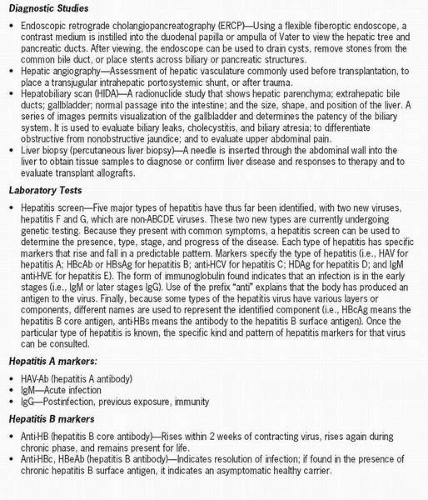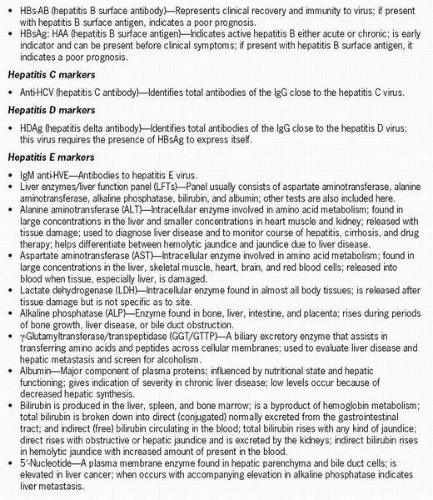Liver and Biliary Anatomy and Physiology
The liver is an organ that receives blood flow from gallbladder, pancreas, intestines and spleen and is responsible for carbohydrate and fat metabolism as well as filtration of toxic substances in the body. Along with the many functions of the liver, it is able to regenerate itself.
The liver, which is the largest organ in the body, is located below the diaphragm in the upper right quadrant of the abdomen. It has a dual blood supply, in which one-third of the total is oxygenated blood under high pressure arriving from the hepatic artery. The remaining two-thirds of the total comes via the portal vein and brings blood rich in nutrients under low pressure from the stomach, intestines, spleen, and pancreas. These two sources mix as they begin to flow through the liver and collect in the left and right hepatic veins, which then drain into the inferior vena cava.
The functional unit of the liver is the lobule, in which hepatocyte cells are organized around a central vein in a spoke-like fashion to form a hexagon. At the corners of the hexagon are the portal tracts where branches of the hepatic artery, portal vein, and lymphatic vessels converge. Blood flows from these tracts through vascular spaces called sinusoids toward the central vein. Lining the walls of the sinusoids are various one-layer-thick cells: hepatocytes, which are responsible for carbohydrate and fat metabolism, blood detoxification, and initial bile formation; bile duct cells, which add to the composition of bile and propel it; endothelial cells, which help filter blood; perisinusoidal cells, which aid in lipid and vitamin A metabolism, production of proteins, and liver regeneration; and Kupffer cells, which are phagocytes. Because the outer portion of the hexagon has initial contact with well-oxygenated nutrientrich blood, it is less vulnerable to injury and circulatory disturbances than cells located near the central vein.
Via these structures and processes, the liver converts fructose and galactose to glucose; removes excess glucose from the blood in response to insulin; makes and stores glycogen, which reconverts into glucose when circulating glucose levels fall; builds and breaks down phospholipids, triglycerides, and cholesterol as needed; manufactures bile to
send to the gallbladder for use as needed; makes ketone bodies as needed; removes excess amino acids from the blood and deaminates them or converts them to other amino acids; stores iron, copper, and vitamins, including B12; synthesizes plasma proteins needed for blood clotting such as albumin, which holds water in the blood vessels, fibrinogen, and prothrombin; digests bacteria and toxic substances to cleanse the blood; detoxifies substances such as urea from amino acid metabolism; converts ammonia to urea for excretion by the kidneys; produces the bases for nitrogen containing compounds needed to make DNA and RNA; and forms lymph.
send to the gallbladder for use as needed; makes ketone bodies as needed; removes excess amino acids from the blood and deaminates them or converts them to other amino acids; stores iron, copper, and vitamins, including B12; synthesizes plasma proteins needed for blood clotting such as albumin, which holds water in the blood vessels, fibrinogen, and prothrombin; digests bacteria and toxic substances to cleanse the blood; detoxifies substances such as urea from amino acid metabolism; converts ammonia to urea for excretion by the kidneys; produces the bases for nitrogen containing compounds needed to make DNA and RNA; and forms lymph.
Stay updated, free articles. Join our Telegram channel

Full access? Get Clinical Tree





